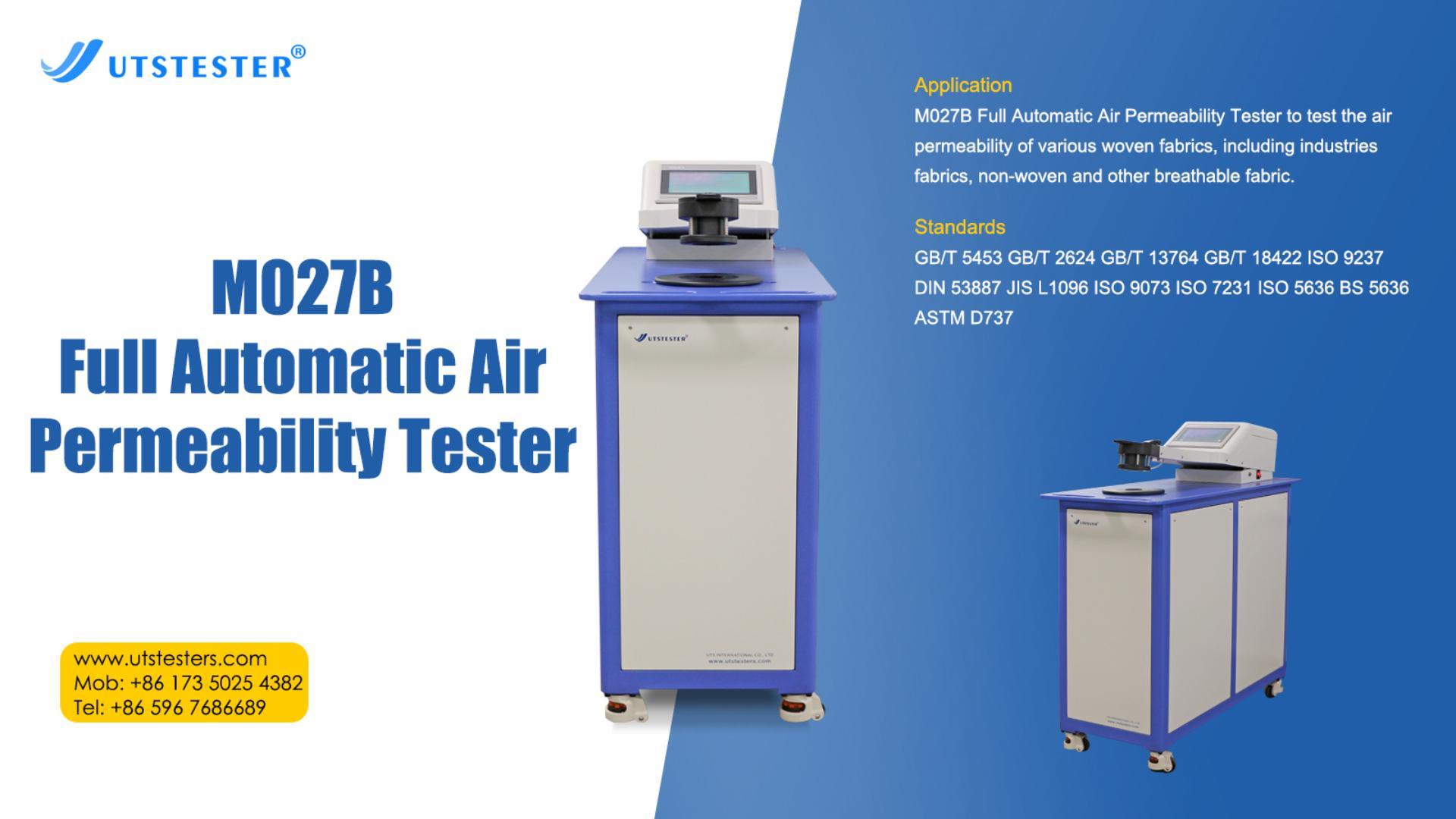 +86 152 6060 5085
+86 152 6060 5085
 +86 152 6060 5085
+86 152 6060 5085
Application of textile air permeability: Multi-field exploration from functional clothing to medical health
Textile air permeability refers to the ability of fabric to allow air to pass through, which directly affects wearing comfort, heat and moisture regulation, and protective performance under specific environments. With the advancement of materials science and textile technology, air permeability has developed from a simple comfort indicator to an important carrier of multifunctional integration, showing a wide range of application value in sportswear, medical protection, building materials, and smart textiles.
I. Core applications in the field of sports and outdoor clothing
1.1 Heat and moisture management of high-performance sportswear
Modern sportswear achieves dynamic heat regulation through precisely designed breathable structures:
Nike's Dri-FIT technology uses a special weaving method with a breathability of 30-40cm³/cm²/s, which quickly discharges sweat vapor.
Under Armour's HeatGear series uses a mesh structure in the armpits and other parts, which increases local breathability by more than 50%.
Marathon compression clothing uses gradient pressure design to maintain an air circulation speed of 0.3-0.5m/s while maintaining muscle support.
1.2 Breathable-protective balance technology for outdoor equipment
Top outdoor brands break through the contradiction between traditional waterproof and breathable:
Gore-Tex membrane has more than 1.4 billion micropores per square centimeter, the pore size is 20,000 times smaller than water molecules, but 700 times larger than water vapor molecules.
eVent fabric uses direct breathable technology, and the breathability efficiency is 30% higher than traditional laminated materials.
New bionic designs such as shark skin structure directional breathable textiles automatically adjust the pore size at different humidity levels.
II. Innovative applications in the field of medical health
2.1 Breakthroughs in functional medical dressings
Advanced wound care materials achieve a "moist healing environment":
1. The air permeability of polyurethane-based dressings is controlled in the range of 1000-5000g/m²/24h, which is 3-5 times better than traditional gauze.
2. Silver ion-containing antibacterial dressings are designed with a multi-layer structure, which not only maintains a high air permeability of 3000-4000g/m²/24h but also continuously releases antibacterial ingredients.
3. Smart hydrocolloid dressings automatically increase air permeability when there is a lot of exudate, and reduce it to less than 2000g/m²/24h when dry.
2.2 Basic support for wearable health monitoring devices
Breathable textiles make long-term wear possible:
1. ECG monitoring underwear uses 3D spacer fabric, and the breathability of key sensor parts is more than 85%.
2. Diabetes management socks use laser punching technology to form a 0.1-0.3mm micropore array in the pressure area.
The new polymer fiber substrate increases the breathability of epidermal electronic devices to 80% of that of ordinary fabrics.
III. Key applications of industrial textiles
3.1 Revolutionary progress in architectural membrane materials
Modern architectural membrane materials achieve the unity of structure and function:
The air permeability of PTFE-coated glass fiber membrane is precisely controlled within the range of 5-20L/m²/s@100Pa
ETFE air pillow structure is adjusted through multi-layer inflatable units, and the U value can reach below 1.0W/m²K
Photocatalytic self-cleaning membrane materials maintain a water vapor permeability of 3000-5000g/m²/24h while maintaining a light transmittance of >90%
3.2 Precise regulation of agricultural textiles
Microenvironment management of high-tech agricultural textiles:
1. The air permeability porosity of the hail net is designed to be 15-25%, taking into account both protection and ventilation needs.
2. Advanced sunshade nets are woven with variable density, and the air permeability is automatically adjusted by ±15% with temperature changes.
3. The water vapor permeability ratio of the soilless cultivation matrix cloth is optimized to the ideal range of 1:1.5-2.0.
IV. Cutting-edge applications in the military and protection fields
4.1 Breathable breakthroughs in nuclear, biological and chemical protective clothing
Modern protective equipment balances protection and comfort:
1. The latest carbon nanotube film protective material has a breathability of 10L/m²/min@1bar, which is 50 times that of traditional materials.
2. Selective permeable membrane technology allows 5000g/m²/24h of water vapor to pass through while blocking chemical warfare agents.
3. Phase change materials combined with breathable fabrics extend the working time in high-temperature environments by more than 30%.
4.2 Evolution of heat dissipation technology for firefighting suits
Thermal management solutions for the new generation of firefighting equipment:
1. The combined design of aerogel insulation layer and breathable channels reduces the core temperature by 3-5°C.
2. The active ventilation system achieves 20-30L/min of air exchange through a micro air pump.
3. Shape memory alloy fibers automatically open air holes at high temperatures, increasing porosity by 15-20%.
V. Future development trends and technological frontiers
5.1 Intelligent responsive breathable materials
Next-generation adaptive breathable technologies include:
1. The air permeability of humidity-responsive fibers can vary by more than 300% within the RH30%-90% range.
2. The phase change point of temperature-sensitive polymers is precisely controlled within the human comfort zone of 28-32°C.
3. Light/electrically controlled breathable membranes can achieve air permeability adjustment at the millisecond level.
5.2 Bionics and interdisciplinary integration
Innovative design directions inspired by nature:
1. Pine cone scale-like three-dimensional fabric structure can achieve humidity-driven automatic opening and closing.
2. Anti-fouling and breathable dual-function surface combining lotus leaf effect and breathability.
3. Spider silk bionic fibers achieve both high strength and ultra-high breathability.
5.3 Innovation oriented to sustainable development
Environmentally friendly breathable solutions:
1. The water vapor permeability of bio-based degradable breathable membrane has reached 8000g/m²/24h.
2. The breathable fiber made from recycled PET maintains 85% of the original material performance.
3. Fluorine-free waterproof breathable treatment technology breaks through the 20,000mm hydrostatic pressure index.

Email: hello@utstesters.com
Direct: + 86 152 6060 5085
Tel: +86-596-7686689
Web: www.utstesters.com